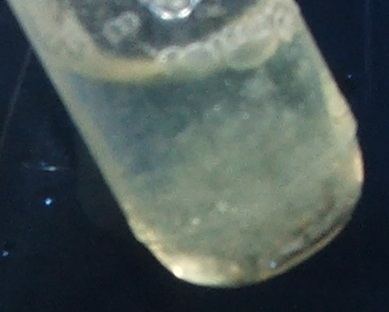Formula Pb(OH)2 Melting point 135 °C Appearance white amorphous powder | Molar mass 241.21 g/mol Density 7.41 g/cm³ | |
 | ||
Lead(II) hydroxide, Pb(OH)2, is a hydroxide of lead, with lead in oxidation state +2. It is doubtful that such a simple compound exists. Lead basic carbonate (PbCO3·2Pb(OH)2) or lead(II) oxide (PbO) is encountered in practice where lead hydroxide is expected. This has been a subject of considerable confusion in the past.
Contents
Preparation
When an hydroxide is added to a solution of a lead(II) salt, a hydrated lead oxide PbO·xH2O (with x < 1) is obtained. Careful hydrolysis of lead(II) acetate solution yields a crystalline product with a formula 6PbO·2H2O = Pb6O4(OH)4. This material is a cluster compound, consisting of an octahedron of Pb centers, each face of which is capped by an oxide or a hydroxide. The structure is reminiscent of the Mo6S8 subunit of the Chevrel phases..
Reactions
In solution, lead(II) hydroxide is a somewhat weak base, forming lead(II) ion, Pb2+, under weakly acidic conditions. This cation hydrolyzes and, under progressively increasing alkaline conditions, forms Pb(OH)+, Pb(OH)2(aqueous), Pb(OH)3−, and other species, including several polynuclear species, e.g., Pb4(OH)44+, Pb3(OH)42+, Pb6O(OH)64+.
Lead hydrate
The name Lead hydrate has sometimes been used in the past but it is unclear whether this refers to Pb(OH)2 or PbO·xH2O.
